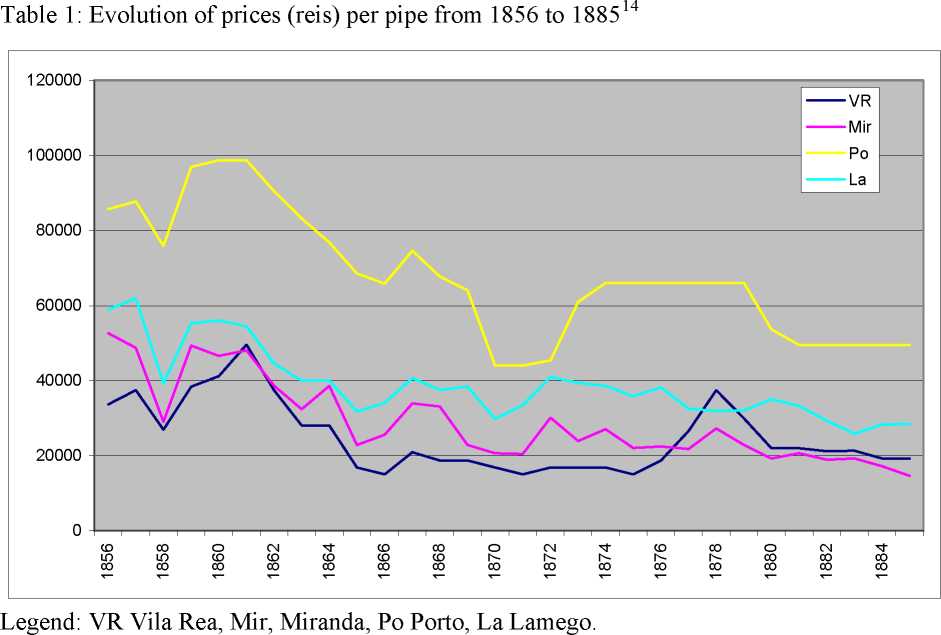evidence of labor scarcity for working in the vineyards that have a difficult access. Second,
the vine blights - the oidium in the 1840s-1850s and the phylloxera in the 1860s-1880s -
imposed new ways of treating the vineyard with the use of chemicals and the use of American
rootstocks. Third, the use of brandy seems to have increased (Bennett 2005). Finally, the
British wine merchants have changed their requirements, insisting on quality and giving more
and more instruction on how to make the wine.

From the export prices of port-wine from the city of Porto, a smooth downward trend
is obvious in the second graph. This explains the preoccupation of the members of the trading
associations in Porto and the wine merchants of the city in general. In the newspapers
comments on the wine market, especially when annual figures appear in January of the
previous year or the monthly data of each preceding month, the comments reveal a concern
for the stagnation of the trade, both in quantities and in prices.
14 From David Justino (Justino 1988). xxx Vol I 326
11
More intriguing information
1. Neural Network Modelling of Constrained Spatial Interaction Flows2. Structural Influences on Participation Rates: A Canada-U.S. Comparison
3. STIMULATING COOPERATION AMONG FARMERS IN A POST-SOCIALIST ECONOMY: LESSONS FROM A PUBLIC-PRIVATE MARKETING PARTNERSHIP IN POLAND
4. Geography, Health, and Demo-Economic Development
5. A Note on Productivity Change in European Co-operative Banks: The Luenberger Indicator Approach
6. DISCRIMINATORY APPROACH TO AUDITORY STIMULI IN GUINEA FOWL (NUMIDA MELEAGRIS) AFTER HYPERSTRIATAL∕HIPPOCAMP- AL BRAIN DAMAGE
7. A MARKOVIAN APPROXIMATED SOLUTION TO A PORTFOLIO MANAGEMENT PROBLEM
8. The Importance of Global Shocks for National Policymakers: Rising Challenges for Central Banks
9. Knowledge, Innovation and Agglomeration - regionalized multiple indicators and evidence from Brazil
10. Constructing the Phylomemetic Tree Case of Study: Indonesian Tradition-Inspired Buildings